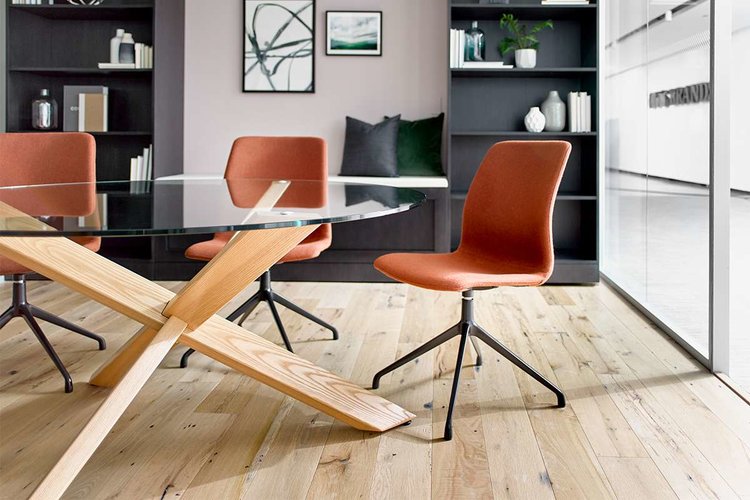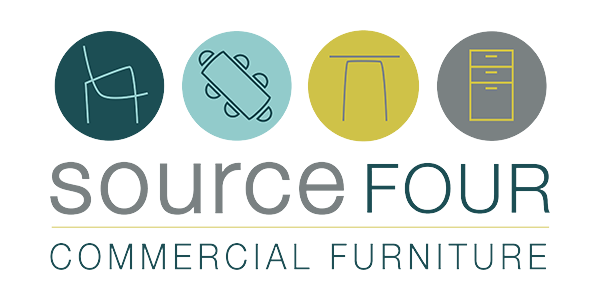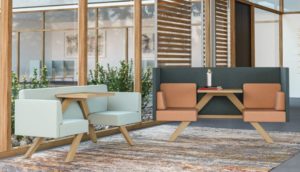
What Makes An Effective Work From Home Setups
The past year and a half have initiated more people working from home than ever before. The problem is that because none of this was anticipated, so many were not prepared for what it takes to work from home effectively. It’s not enough to just have your laptop and assume that you’ll be productive for the long term.
In addition to having the right equipment, the physical setup and ergonomic consideration has become our individual responsibility for our long-term health. The blurry line of office injuries vs injuries during personal time is our responsibility more than ever before. A good workspace is critical in avoiding repetitive strain injuries and other health-related injuries.
What is ideal? A home office should ideally be a separate space in your home that is properly outfitted for work. Do as much of the following as you can to create an effective, safe workspace for the long term.
A Dedicated Time and Space
Not everyone has a spare office or workspace, but as much as possible, try to have one single space to do your work. Studies show that ideally this should not be your kitchen or bedroom, as your brain will begin to associate sleep with work, or work with eating, or vice versa.
To be effective, it’s important to feel like you can have a space to work. When working from home, work should not feel like it is interrupting your personal life. If possible, have a single space to work from, and implement your own “work hours” as best you can to avoid feeling like you’re always on the clock.
The Right Desk for You
When it comes to working from home, many of us have found ourselves with our laptops open on our lap while sitting on the couch, or maybe you’ve been working from your kitchen table for the last year because “it’s good enough.”
Can we just say right now- if you’re planning to work from home long term, invest in a height adjustable desk and a separate adjustable monitor stand/arm. This allows you to position the worksurface correctly while getting your screen back far enough to avoid eye strain. The standard desk or table height is 29 inches. That does not consider the height of your keyboard. Depending on your anatomy, having your keyboard height at the “standard” of 29 inches is likely going to put strain on your neck, back and shoulder muscles.
The “right” desk is different for everyone, but something that often goes overlooked is storage space. Now for certain jobs, you may need a lot of space to put files, materials, or any number of priced items. However, most of us have gone totally paperless. If that’s you, consider going with a desk that is a singular tabletop with no drawers. This will greatly reduce clutter because if you don’t have a place to set those random items, you simply won’t because there isn’t storage for them. This will greatly help keep your workspace tidy and uncluttered, and ultimately make you more productive. You can check out some great desk options here.
The Right Chair for You
There are a lot of bad chairs out there that can injure you with prolonged computer use. Dining chairs and deck chairs, for example are rarely at the right height to work on a keyboard and they do not provide the necessary micro motion movement needed to pump blood from the lower extremities back to your heart, not to mention good posture for your neck, back and shoulders.
Similarly, to a height-adjustable desk, we recommend investing in a chair that will best suit your personal needs. These come in all shapes and forms, but we’d recommend one with an adjustable height seat, with casters, and provides good lumbar support for the lower back. Ideally a seat pan that adjusts in and out. (Yes, our femurs are all different sizes.) This adjustment will reduce pressure on the back of your legs that will reduce blood circulation if the chair is hitting the back of your leg. An arm rest is ok if you use it properly. I often take arms off chairs for people to encourage a natural position with your arms. Locking your arms onto the chair and spending hours upon hours on a keyboard not only reduces the use of major muscles (more on movement later), but it also tends to put pressure on your neck and upper shoulder when being dependent on the arms.
If you feel you must have an armrest, you should avoid using it while you are working. There should be no pressure from your arm onto the arm rest. The arm rest is an “arm rest,” not an “arm work.”
Lastly, make sure your chair rocks. The more it rocks the better. It has been well documented that movement, even slight micromotion in your lower and upper leg muscles initiated by your feet and ankles greatly increases blood circulation.
.
Movement
There is little written about movement in product marketing materials. Yet, this is the single most important thing you should be focused on improving while working on a computer laptop or phone.
Think about it, how many hours a day do you sit? Work, transportation, watching TV, sports events, movies, meals. WE SIT A LOT! Sitting is one of our biggest health enemies of the century. The answer to improved health and longevity is movement to increase blood flow, which is done by moving your muscles. Try setting your clock or a reminder on your phone to do something as often as possible. This will make a big difference on your health and how you feel at the end of the day. You can do these stretches anywhere. Try it, you’ll be surprised.
https://www.verywellfit.com/best-stretches-for-office-workers-1231153
Proper Lighting
Often forgotten about, lighting plays a key role in any work environment. Overhead lighting is preferable, as it is indirect, and unlikely to cause a glare on your computer monitor. If your workspace does not have good overhead lighting, then consider going with a tall lamp, because you don’t want direct light hitting you at eye level. If you do go the lamp route, be sure to not place it in a way that creates glare, but also not in a way that creates harsh shadows. Your workspace should be well lit and clearly visible.
Due to amazing technology, we will always be working from home as well as the office. If health and wellness is your goal, you may find these tips valuable, and don’t forget to MOVE, and check out our election of products for both at home and in the office.







